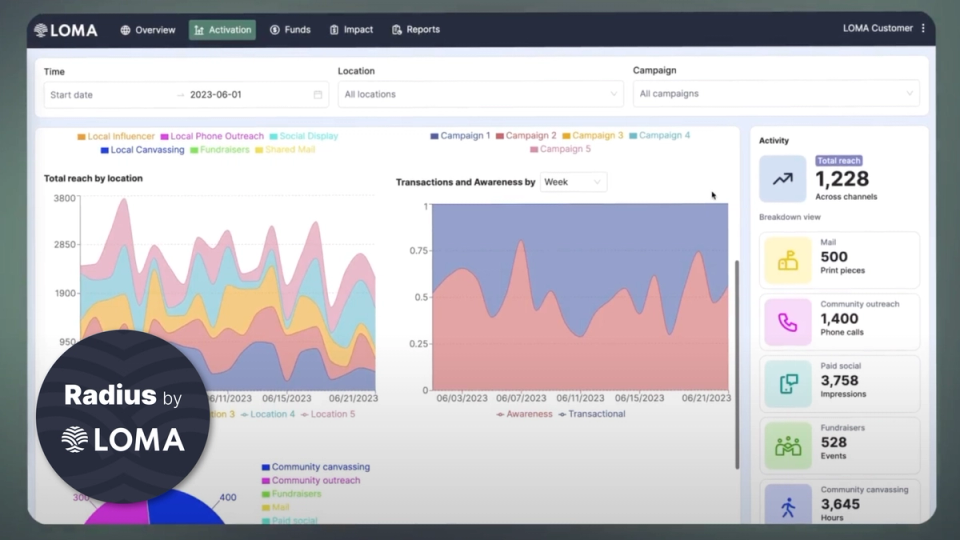By Alex Nocifera, Founder & CEO at LOMA
Fractured markets, increased competition, and tighter margins have made it more difficult to optimize franchise operations today. And more complex operations make it more difficult to achieve scalable growth.
Today’s most successful franchises, though, are leveraging a bevy of software point solutions available to unlock growth opportunities. Today’s most popular software point solutions help franchises operate more efficiently and successfully across their operations.
But while they are individually beneficial, these point solutions are typically just that — siloed and disaggregated point solutions. Operating within multiple, individual platforms can sometimes be counterintuitive to the problems you’re trying to solve and goals you’re trying to achieve by purchasing these solutions in the first place!
That’s why today’s most forward-thinking, successful franchises aren’t just fully leveraging their point solutions, they’re strategically consolidating them.
Here’s why franchises must consolidate their tech stacks, and how to strategically drive greater ROI from them:
You can’t afford not to consolidate your tech stack
I touched upon this above, but it bears repeating — point solutions are fragmented and, subsequently, moving between three, four, even 10 platforms each day or week is a massive productivity drain. In fact, toggling between services can take up to four hours per week.
And that doesn’t even include time spent managing these platforms, dealing with multiple customer success teams, etc.
Franchise marketers are designing and deploying both corporate and franchise strategies, and are often supporting owners in their local marketing. Who can afford to effectively give away an extra four+ hours each week?
Add to that the increased risk of errors when sharing data between platforms, lack of native integrations, and even increased costs when you’re paying bills for upwards of multiple SaaS marketing point solutions per month…and it adds up.
5 steps for leveraging a tech stack for scalable growth
The time is now to improve productivity and ROI with a consolidated franchise tech stack. Here’s the consolidation approach taken by today’s most successful franchises:
1. Take an honest look at your tech stack
Determine which tools in your tech stack contribute to mission-critical objectives. Identify which apps your teams use regularly and each app’s benefits and costs. Each tool should tie directly into at least one business and/or marketing OKR, like franchise licenses sold or local marketing performance.
2. Avoid overzealous cutting
You may be tempted to start slashing your software and canceling service agreements — don’t! At least, not yet. First, dig deeper to find functionality overlaps and identify where to consolidate. CRMs and sales enablement tools are ripe for cutting, since you probably only need one to reach leads and manage franchisees.
3. Identify and retain needle-moving tools
You know what’s contributing to your OKRs and have identified redundancies in your tech stack. Put a “star” next to those tools and platforms that represent your franchise’s new, lean tech stack that will empower you and your owners.
Quick tip: clear the list of tools getting the ax with your teams. Some tools may be used cross-functionally and serve little purpose to one, but be essential to another.
Keep — or swap in — tools that solve multiple use cases. Say your franchise is prioritizing sales enablement, social media, and local marketing. You may have separate tools for each of these, but landing on an all-in-one platform could be the better choice. Consolidating point solutions into fewer, more robust platforms reduces costs and increases adoption (fewer logins and customer success teams to deal with).
As you consolidate, maintain open conversations with affected teams. Excite them about platforms or tools that remain or that will consolidate what took many tools previously. Buy-in at the earliest stage increases adoption rates and satisfaction among your team and owners when it’s “go” time.
4. Keep your team informed and excited
The hard part’s over: you’ve cut and strategically added to optimize your tech stack. Your team has bought-in, and they’re as excited as you are for this next stage.
It’s “go” time.
Data migration is the most important technical component here. Ensure your IT and marketing teams work closely together to avoid accessibility hiccups.
A joint training task between the individual spearheading this move internally and your solution onboarding/customer success teams is essential. Set expectations for training timelines and provide strong ongoing support for your team as they get used to their new tools (and so they get quick wins to prove just how beneficial tech stack consolidation can be!).
5. Rinse and repeat
Your team, ownership, budget, and goals will change — your tech stack should change along with them. Schedule a survey or regular conversations with your team to continually assess your stack. Discuss needs, goals, and internal elements.
Pencil in regular assessment of your tech partners: Who has great service? Who hasn’t taken advice about performance or feature upgrades? Who has price changes without corresponding ROI?
Revamping your franchise’s tech stack leads to more optimized tech spend and happier internal teams and owners. Ultimately, it can help drive strong, scalable growth.



